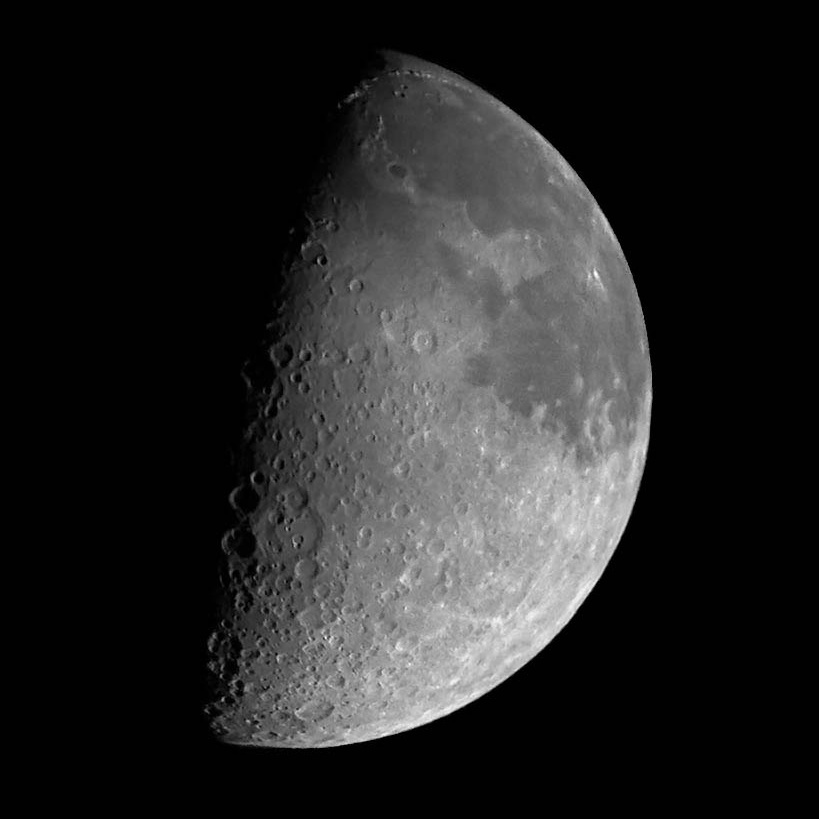|
|
| (6 intermediate revisions by the same user not shown) |
| Line 1: |
Line 1: |
| | __NOTOC__ | | __NOTOC__ |
| | =Over the Pole= | | =Over the Pole= |
| | + | <!-- Start of content --> |
| | <div class="post" id="post-1011"> | | <div class="post" id="post-1011"> |
| | | | |
| Line 6: |
Line 7: |
| | <p>[[File:Stardustmoonf.jpg|stardustmoonf.jpg]]<br /> | | <p>[[File:Stardustmoonf.jpg|stardustmoonf.jpg]]<br /> |
| | <em>image from Stardust spacecraft, processed by [mailto:tedstryk@gmail.com Ted Stryk]</em></p> | | <em>image from Stardust spacecraft, processed by [mailto:tedstryk@gmail.com Ted Stryk]</em></p> |
| − | <p>Ted has rescued [http://www.lpod.org/?m=20070310 another] little known image of the Moon. The [http://stardust.jpl.nasa.gov/home/index.html Stardust] mission very successfully flew past Comet Wild 2, capturing cometary dust particles that were parachuted to a landing in the Utah desert in January 2006. In 2001 Stardust flew over the lunar north pole and took a series of 23 images through a variety of filters. Unfortunately, the camera lens was contaminated producing foggy looking [http://stardust.jpl.nasa.gov/news/ega/lunar.html images]. Ted corrected for the fogging by looking at how far it extended beyond the limb and used an estimate of the brightness of the limb area to compare to the brightness of the fog. It took literally a few months of trial and error before it worked. He then stacked a number of the images and used standard image enhancement techniques to produce this cleaned up view with an unfamiliar perspective. The bright Copernicus-like crater near the mid-point of the image is Pythagoras and the north pole is near the top of the image at the terminator. The 90°W limb (as seen from Earth) would be a slanted line that skirts the left side of Oceanus Procellarum. The large crater near the top is the farside basin Birkhoff (148°W, 59°N) with an arc of its inner ring clearly visible. The rest of the farside visible with this view and resolution is rather boring. We are lucky to have the interesting side of the Moon facing Earth!</p> | + | <p>Ted has rescued [[March_10,_2007|images]]. Ted corrected for the fogging by looking at how far it extended beyond the limb and used an estimate of the brightness of the limb area to compare to the brightness of the fog. It took literally a few months of trial and error before it worked. He then stacked a number of the images and used standard image enhancement techniques to produce this cleaned up view with an unfamiliar perspective. The bright Copernicus-like crater near the mid-point of the image is Pythagoras and the north pole is near the top of the image at the terminator. The 90°W limb (as seen from Earth) would be a slanted line that skirts the left side of Oceanus Procellarum. The large crater near the top is the farside basin Birkhoff (148°W, 59°N) with an arc of its inner ring clearly visible. The rest of the farside visible with this view and resolution is rather boring. We are lucky to have the interesting side of the Moon facing Earth!</p> |
| | <p>[mailto:tychocrater@yahoo.com Chuck Wood]</p> | | <p>[mailto:tychocrater@yahoo.com Chuck Wood]</p> |
| | <p><strong>Technical Details:</strong><br /> | | <p><strong>Technical Details:</strong><br /> |
| | 16 Jan 2001. [http://stardust.jpl.nasa.gov/mission/camera.html Navigation Camera]: 57 mm aperture, f/3.5 + Cassini Imaging Science Subsystem CCD camera. The entire Stardust dataset is available on the PDS small bodies node. </p> | | 16 Jan 2001. [http://stardust.jpl.nasa.gov/mission/camera.html Navigation Camera]: 57 mm aperture, f/3.5 + Cassini Imaging Science Subsystem CCD camera. The entire Stardust dataset is available on the PDS small bodies node. </p> |
| − | <p><b>Yesterday's LPOD:</b> [[March 18, 2007|Sharper TH]] </p> | + | <p><b>Yesterday's LPOD:</b> [[March 18, 2007|Sharper Th]] </p> |
| | <p><b>Tomorrow's LPOD:</b> [[March 20, 2007|3.8 Billion Years of History]] </p> | | <p><b>Tomorrow's LPOD:</b> [[March 20, 2007|3.8 Billion Years of History]] </p> |
| − | <!-- Removed reference to store page -->
| |
| − | </div>
| |
| | </div> | | </div> |
| | + | <p> </p> |
| | + | <p> </p> |
| | + | <p> </p> |
| | + | <!-- End of content --> |
| | {{wiki/ArticleFooter}} | | {{wiki/ArticleFooter}} |




